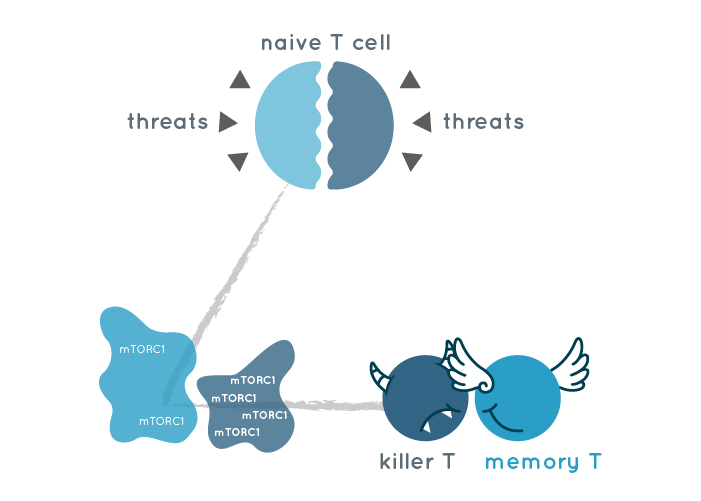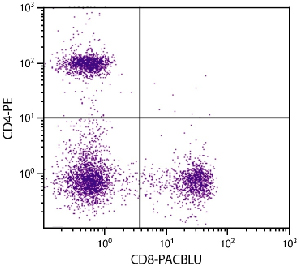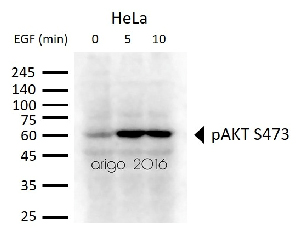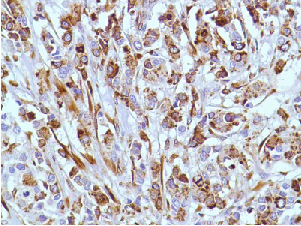Asymmetric division makes different types of T cells
Asymmetric division makes different types of T cells
|
In contrast to symmetric cell division which produces two identical copies of the original cell, asymmetric cell division gives rise to two daughter cells with distinct cellular fates. This is a well conserved mechanism commonly found in stem cell differentiations as well as in our immune system. Studies have shown that asymmetric partitioning contributes to T cell precursors with different CD8 expression, which further results in killer T cell and memory T cell. But what is the mechanism inside causing the different fates of T cells? A research published on Nature Immunology by Dr. Powell and his colleagues shows that the fate-determining key role is mTORC1. When a naïve T "mother" cell encounters a threat for the first time and divides, one of its daughter cell receives far more mTORC1 activity than the other daughter cell. The asymmetric division of mTORC1 appears to reprogram the metabolic activities of each daughter cell so that the high-activity daughter becomes an active immune system killer T cell, while the low-activity daughter generates a memory T cell that displays a long-term survival and reactivates the immune response against threats. This discovery of asymmetric partitioning of mTORC1 might be widespread across cells in many biological systems and provides new aspects for studying stem cell differentiation. arigo accelerates your research on T cell differentiation by providing excellent antibodies and reagents. |
| CD8 Antibody (ARG21310) |
||
| AKT pS473 Antibody (ARG51558) |
||
| S6 Ribosomal pS235/S236 Antibody (ARG53552) |
||
|
Human Breast Ductal Cell Carcinoma |
||
Reference:
Powell et al. 2016. Nature Immunology 17, 704–711 (2016)




